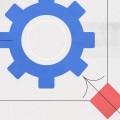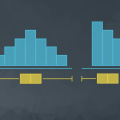Gantt charts are a popular project management tool used to plan, track, and manage projects. They help project managers and teams visualize the timeline of a project and all of its components in an easy-to-understand format. In this article, we'll explore the basic components of a Gantt chart, explain the benefits they offer, and provide best practices for creating effective Gantt charts. With these insights, you'll be able to use Gantt charts more effectively in your own project management processes.
Benefits of Using Gantt Charts
Gantt charts are an invaluable tool for project managers.They provide an overview of the entire project timeline and help identify potential problems or delays ahead of time. They also enable collaboration between team members, allowing for better coordination and timely completion of tasks. The most significant benefit of using Gantt charts is that they allow project managers to easily track progress and identify any potential issues. By setting clear milestones, team members can see how far along they are in each task and what still needs to be done.
This makes it easier to hold people accountable and ensure that deadlines are met. Gantt charts also enable project managers to adjust their plans as needed. If a task is taking longer than expected, they can easily adjust the timeline to accommodate the extra time needed. This helps to prevent delays and keeps the project on track.
Finally, Gantt charts make it easy for team members to collaborate and coordinate tasks. They can quickly see which tasks need to be completed and who is responsible for them. This makes it easier to assign tasks, ensuring that all team members have a clear understanding of their responsibilities. Examples of successful projects that have used Gantt charts include the construction of the Panama Canal and the Apollo 11 mission.
In both cases, Gantt charts were used to keep the projects on track and ensure that all deadlines were met. Gantt charts are an invaluable tool for project managers, enabling them to plan and track progress with ease, as well as identify potential problems before they arise. Gantt charts help project managers keep track of tasks and deadlines, visualize progress, and allocate resources effectively. Furthermore, they provide stakeholders with a clear overview of the project timeline and enable them to stay up-to-date with the project's progress.
By implementing best practices such as breaking down tasks into manageable chunks and assigning resources appropriately, project managers can ensure that their Gantt charts remain effective. In conclusion, Gantt charts are an essential tool for any project manager, offering numerous benefits and helping them stay organized and on track. They allow project managers to plan, track progress, and identify potential issues quickly, giving them the best chance of success.


